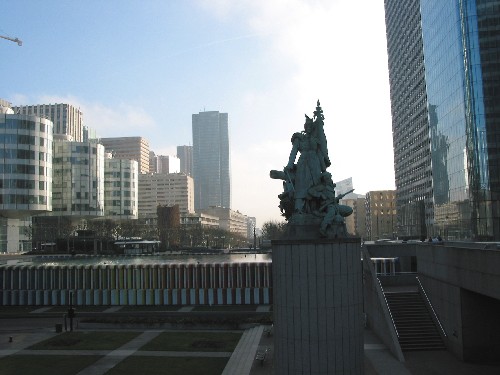(Puteaux) “21e” arr.
Métro : La Défense Grande Arche (1, A)
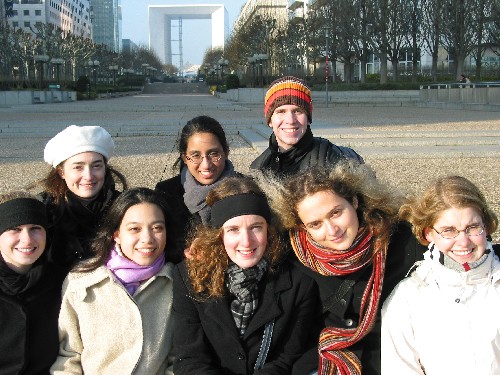
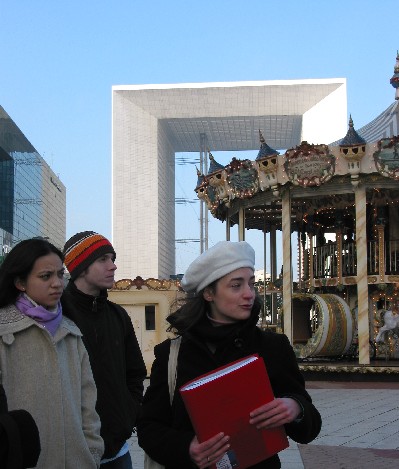 The
Voie Triomphale, or the Great Axis, of Paris runs from the Louvre in the
center of Paris, all the way out to La Grande Arche de La Défense
on the other side of the Seine outside of Paris. When the business district
of La Défense was envisioned, the planners wanted to keep the axis
going and add a large structure that would be clearly visible all the way
from the Arc de Triomphe. With the exception of the one large structure,
the axis was kept free, with only low lying sculptures, such as fountains,
in the path. They held a contest for the design of the structure and the
winning design was built. The Grande Arche is a cube with the center and
two faces removed. The sides and top are very wide and contain offices within.
In the center is a large canopy “wing” that is both artistic
and functional; the wing cuts the wind that can develop inside the arch.
The Grande Arche is a nice blend of form and function and is distinctly
modern while still embracing the historical integrity of the Voie Triomphale.
The
Voie Triomphale, or the Great Axis, of Paris runs from the Louvre in the
center of Paris, all the way out to La Grande Arche de La Défense
on the other side of the Seine outside of Paris. When the business district
of La Défense was envisioned, the planners wanted to keep the axis
going and add a large structure that would be clearly visible all the way
from the Arc de Triomphe. With the exception of the one large structure,
the axis was kept free, with only low lying sculptures, such as fountains,
in the path. They held a contest for the design of the structure and the
winning design was built. The Grande Arche is a cube with the center and
two faces removed. The sides and top are very wide and contain offices within.
In the center is a large canopy “wing” that is both artistic
and functional; the wing cuts the wind that can develop inside the arch.
The Grande Arche is a nice blend of form and function and is distinctly
modern while still embracing the historical integrity of the Voie Triomphale.
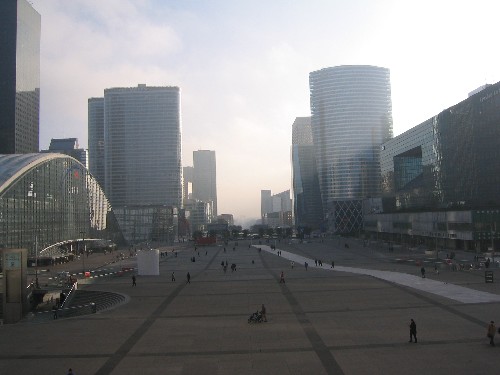
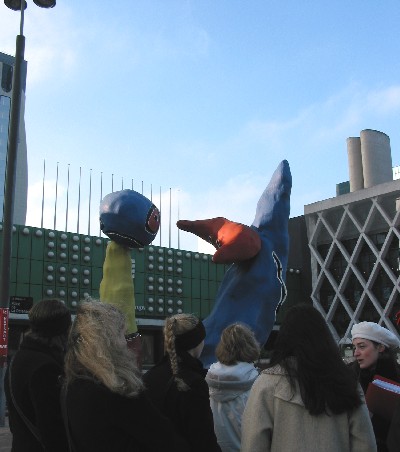 Ever since the
large renovation of Paris conducted under Haussmann, the French government
has tried to keep the Parisian landscape aesthetically pleasing, rejecting
large skyscrapers. While this was all well and good for the beauty of Paris,
it left the business world in the lurch.
As a result, a new section of Paris, geographically outside of Paris, was
created, starting in the 1950s. The new area was named
La
Ever since the
large renovation of Paris conducted under Haussmann, the French government
has tried to keep the Parisian landscape aesthetically pleasing, rejecting
large skyscrapers. While this was all well and good for the beauty of Paris,
it left the business world in the lurch.
As a result, a new section of Paris, geographically outside of Paris, was
created, starting in the 1950s. The new area was named
La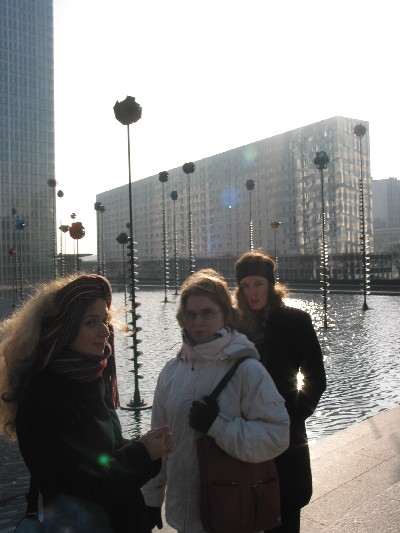 Défense, after a sculpture
entitled “La Défense de Paris” that was located
in the center of a village that was taken over for the new development.
Although the primary purpose of La Défense was a business
district, it was also
carefully planned to be a pedestrian haven, with all traffic relegated underground
and statues littered among the glass buildings.
Défense, after a sculpture
entitled “La Défense de Paris” that was located
in the center of a village that was taken over for the new development.
Although the primary purpose of La Défense was a business
district, it was also
carefully planned to be a pedestrian haven, with all traffic relegated underground
and statues littered among the glass buildings.
Since Sophie took us to see La Défense on a Saturday, there was almost no pedestrian traffic, allowing us to explore the “open air museum” without interruption. The planners of La Défense commissioned sculptures and fountains to make the landscape more interesting. Some of the sculptures were abstract, such as the Joan Miro piece, “Deux personages fantastiques.” Other pieces of artwork were more functional, such as the many fountains used to keep clear the Great Axis of Paris that terminates in the Grande Arch de la Défense.
